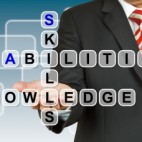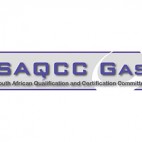The biggest challenge facing South Africa’s disadvantaged youth is education. Section 29 of the constitution guarantees “everyone” the right to a basic education and further education, which the state, “through reasonable measures, must make progressively available and accessible”.
An obligation to make that education free for those who cannot afford it is implied, as is an obligation to make sure that all South Africans receive the same quality education, whatever their economic circumstances.
It is clear that we are failing to make this a universal right among the youth. In a statement commemorating Human Rights Day on 21 March 2013, the South African Human Rights Commission (SAHRC) said, “Much still has to be done to ensure not only access to education, but also the quality of education ... Poverty remains a significant barrier, with children in the poorest households nearly three times less likely to complete secondary schooling than children in the richest households.”
As United Nations HRC rapporteur Katerina Tomasevski pointed out in an article for the Education Rights Project, “I read that no child can be turned away from a state school if the parents cannot afford to pay the fees – parents are eligible for an exemption. But how does a parent acquire that exemption? Forms have to be filled in and have to be backed by birth certificates, marriage certificates, the death certificate of your grandfather, signed before a notary, stamped, witnessed... You have to be able to handle the bureaucratic system to stand any chance of achieving this exemption; but most impoverished parents have little or no education, and are often illiterate.”
Many poor parents nevertheless make enormous sacrifices to pay school fees and buy uniforms and supplies, but even after the struggle to get a child into a school is won, the vast majority still face major problems: crumbling infrastructures, underfunded or non-existent learning materials, inadequate security and a shortage of qualified, effective teachers. It is not surprising that so many learners cannot achieve under these circumstances, or that so many grow discouraged and drop out – to the despair of parents who see years of hard work go to waste.
More mathematics, better mathematics needed
50% of the learners who started school in 2001 were candidates for matric in 2012; the rest had dropped out, or were stuck repeating lower grades. The mathematics pass rate of 54% was hailed as an improvement on the 2011 figure of 46.3%, but in reality, it means that only a quarter of the learners who started school in 2001 passed matric mathematics. The result becomes even less impressive when considering that the matric mathematics pass mark is set at 30%. As Statistician-General Pali Lehohla said in May 2103, “A 30% pass mark will not give South Africa the necessary human resources to work.”
Core mathematics is vital in many professions; any child planning to study engineering, medicine, actuarial science, finance or the physical sciences needs to achieve at least 60% in matric mathematics. According to a South African Institute of Race Relations report released on 29 January 2013, only one learner in 20 who wrote matric mathematics or science in 2012 passed with a mark higher than 50%, let alone 60%. Put simply, less than 3% of the 2002 Grade ones are now eligible to study university degrees that require mathematics. “If I had one wish, it would be that 70% of learners who pass mathematics obtain 60% or more. Can you imagine the effect this would have on our country and its people?” says Chantyl Mulder, Senior Executive at the South African Institute of Chartered Accountants (SAICA). If this dream is going to become a reality, disadvantaged learners and their parents need to see core mathematics as an educational priority.






